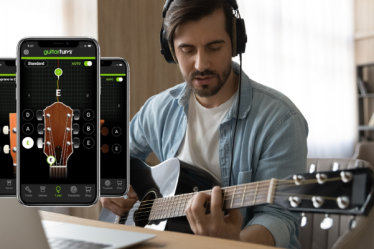Losing photos is a common occurrence. It can happen for many reasons, such as accidentally deleting them or having problems with your phone. In our digital age, we place a high value on the photos we take with our mobile devices. They have sentimental and, often, professional value.
Having a reliable app to recover deleted photos is very important. It can make all the difference between losing or recovering precious photos. We will show you the importance of these apps and how they can help you recover photos on your phone easily and safely.
Main points
- Importance of reliable applications to recover deleted photos.
- Common photo loss situations on mobile devices.
- Image recovery as a growing need in digital life.
- Relevance of effective methods for restore photos on cell phone.
Best Apps to Recover Photos on Android
Losing important photos can be a big problem in today’s digital world. But don’t worry, there are apps that can help you recover those precious photos on Android devices. We’ll show you three of the best apps on the market.
DiskDigger
DiskDigger is a application to recover photos deleted. It has an easy-to-use interface. This helps you recover images even if your device is not rooted.
It's perfect for different loss situations. DiskDigger searches both the internal and external areas of the device. It shows thumbnails of the photos before saving them.
EaseUS MobiSaver
EaseUS MobiSaver is a software to recover photos effective for Android. It is easy to use and supports various file types. Just run the app, scan and choose the photos you want to recover.
It also offers technical support if you run into any issues during the process.
Dumpster
Dumpster is known as the “Recycle Bin” for Android. It helps you recover deleted photos quickly and securely. Unlike other apps, Dumpster stores backup copies of deleted photos.
Allows you to view and restore deleted photos directly in the app. This without needing internet.
| Application | Features | Ease of Use |
|---|---|---|
| DiskDigger | Recover photos from non-rooted devices, scan internal and external storage | High |
| EaseUS MobiSaver | Support multiple file types, one-click recovery | Very High |
| Dumpster | Stores backups, offline recovery | Average |
Best Apps to Recover Photos on iPhone
Users of iPhone Many people often need to recover photos that they have deleted by mistake. There are several effective and easy-to-use tools available. Here, we will talk about Dr.Fone, PhoneRescue, and Tenorshare UltData, highlighting their features in the iOS world.
Dr.Fone
Dr.Fone is widely known and used around the world. Its user-friendly interface makes photo recovery simple. With it, you can quickly recover deleted photos, whether from your device or from iCloud and iTunes backups.
In addition to photos, Dr.Fone also recovers other types of files. This makes it a complete solution for those who use iPhone.
PhoneRescue
PhoneRescue is great for recovering photos on iPhone. It rescues photos directly from the device even without backups. It is known to recover various types of data successfully.
Its interface is clear and helps users at every step. This ensures efficient and hassle-free recovery.
Tenorshare UltData
Tenorshare UltData is efficient and flexible in recovering files on iPhone. It is very good at recovering deleted photos. It supports direct recovery from device, iCloud and iTunes.
Its interface is simple, making it easy to use even for those who are not very experienced. The ability to preview files before recovery is a big advantage. This helps to have more control and precision when recovering photos.
Crucial Tips to Recover Deleted Images
When you need to recover photos from your phone, it’s important to act quickly. Follow these tips to increase your chances of success. Let’s see how to recover your precious photos.
Check the Photos App Trash
Many photo apps have a trash can. This is where deleted photos are temporarily stored before they are erased forever. This is the first place to check.
- Open the photos app on your phone.
- Navigate to the trash option.
- Browse your deleted photos and select the ones you want to recover.
- Choose the “Restore” option to transfer them back to the main album.
This simple method can solve many problems. You don't need any additional tools to recover deleted photos.
Use Reputable Recovery Programs
If the photos are not in the recycle bin, use recovery software. Choosing reliable software increases your chances of success. Here are some recommended programs:
| Program | Compatibility | Features | Assessment |
|---|---|---|---|
| DiskDigger | Android | Photo and video recovery, preview deleted files | 4.3 / 5 |
| Dr.Fone | iOS and Android | Data recovery, deleted file restoration, backup and restore | 4.5 / 5 |
| EaseUS MobiSaver | iOS and Android | Photo, Contact, SMS Recovery, Data Backup | 4.4 / 5 |
| PhoneRescue | iOS and Android | Recover photos, messages, contacts directly from the device | 4.2 / 5 |
Top-rated photo recovery programs are effective. They are designed to scan your device and recover your valuable photos.
How to Use Software to Recover Photos on Computer
Use a software to recover photos on your computer is a great way to recover deleted photos. We will show you how to do this successfully.
First, connect your phone to your computer with a USB cable. Make sure both are properly connected and recognized. Then, choose one program to recover photos reliable. Software like EaseUS Data Recovery Wizard, Recuva, and Stellar Photo Recovery are good examples.
- Software Installation: Download and install the software to recover photos on your computer.
- Deep Scan: Launch the program and choose the device to scan. Most software has a deep scan option. This mode helps you find photos that were deleted a long time ago.
- Preview: After scanning, view the found files. This ensures that your photos are on the list of recoverable items.
- Recovery: Select the photos you want to recover and click to save them. Choose a safe place on your computer to save the files.
It is crucial to take good care of the recovered files. Use a program to recover photos trusted and recommended by experts. This improves your chances of success and protects your device from malware and data loss.
Finally, remember that prevention is better than cure. Back up regularly and use cloud services help you avoid problems. They keep your valuable memories safe.
Tips to Prevent Photo Loss in the Future
Losing photos can be very frustrating. But there are things you can do to prevent this from happening. Here are some important tips to help you keep your photos safe.
Backup Regularly
Make a photo backup Backing up your photos regularly is the best way to protect them. Scheduling automatic backups will help you remember. Use different locations to store your photos, such as external drives, SD cards, and emails.
Use Cloud Services
You cloud services are great for storing your photos. Platforms like Google Drive, iCloud, and Dropbox let you access your photos from anywhere. They sync automatically, keeping your photos always up to date.
Install Protection Applications
It is very important to protect your device from malware and other risks. To prevent photo loss, install reliable security applications. Avast and Norton are good examples to protect your photos and data.
| Tip | Benefit |
|---|---|
| Regular Backup | Prevents data loss due to device failure |
| Cloud Services | Remote access and automatic photo synchronization |
| Protection Applications | Protection against malware and digital threats |
Conclusion
We have explored several ways to recover photos from your phone. We have used apps like DiskDigger, EaseUS MobiSaver, and others. They help you restore photos quickly and effectively.
We'll show you some important tips to increase your chances of success. Checking the Photos app's trash is essential. It's also important to use trusted recovery programs.
To avoid problems, it is crucial to make regular backups. Use cloud services and installing protection apps are also important steps. These actions protect your photos and keep your files safe.
It’s vital that users are always prepared for digital loss. With the right tools and a proactive approach, it’s possible to recover photos, ensuring your memories are always protected.
FAQ
How can I recover photos on my cell phone?
Para recuperar fotos deletadas, use aplicativos para Android e iPhone. DiskDigger, EaseUS MobiSaver, Dumpster, Dr.Fone, PhoneRescue e Tenorshare UltData são boas opções. Eles ajudam a recover deleted photos por acaso ou por falhas do dispositivo.
What are the best apps to recover photos on Android?
For Android, DiskDigger, EaseUS MobiSaver, and Dumpster are great. DiskDigger recovers photos even after formatting. EaseUS MobiSaver is easy to use. Dumpster automatically stores deleted photos.
What apps are recommended to recover photos on iPhone?
For iPhone, Dr.Fone, PhoneRescue and Tenorshare UltData are recommended. Dr.Fone has multiple recovery functions. PhoneRescue recovers photos directly from the device or from backups. Tenorshare UltData is easy to use and effective.
What should I do immediately after realizing I've lost my photos?
First, check the trash in the Photos app. Deleted photos often stay there for a while. Then, don’t take any new photos or videos to avoid erasing the lost data. Finally, use a reliable image recovery program.
What are some crucial tips to recover deleted images?
Check the Photos app’s trash and use top-rated recovery programs. Acting quickly is essential to avoid data overwriting. Choose recommended apps and software to increase your chances of success.
How can I use software to recover deleted photos on computer?
Connect your phone to your computer via USB cable. Use a photo recovery software, such as EaseUS Data Recovery Wizard or Recuva. Follow the instructions to scan your device and recover deleted files. Save them to a secure folder on your computer.
What can I do to prevent photo loss in the future?
Back up your images regularly. Use cloud storage services like Google Photos, iCloud, or Dropbox. Install protection apps to help you recover your data in case of data loss. These practices keep your photos safe and accessible.



